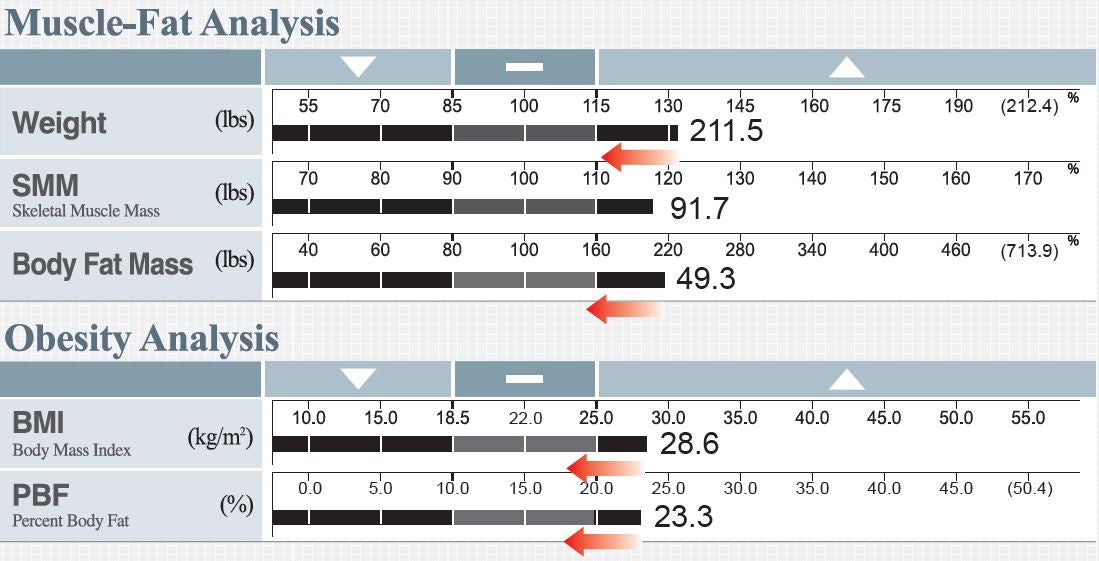
There’s an oft-used saying that “abs are made in the kitchen.”
The underlying theory, for those who haven’t heard this before, is that what you eat is more important than how much you exercise if you want to see defined abdominal muscles.
How much truth is there to this mantra? Are Instagram perfect abs really made simply by watching what you eat? Or can you just do a thousand crunches a day and reveal your six-pack that way?
In this article, we’ll 1) break down the science of nutrition vs. exercise and how each impacts body composition, 2) look at a few different types of diet plans and their effects on the body, 3) decide whether the saying “abs are made in the kitchen” is fact or fiction.
Let’s jump right in.
Background

The notion of “abs are made in the kitchen” is based on the fact that it is so much easier to gain calories than it is to burn it off through exercise.
This makes sense when you attach some numbers to it.
For example, let’s say your preferred exercise routine is swimming a few days a week. On average, you can expect to burn 400-700 calories in an hour.
But if you go home and scarf down a couple pieces of pizza, you can quickly take in the same amount of calories in a matter of minutes.
So from a time/practicality standpoint, it’s much easier to reduce your caloric intake by 400 – 600 calories a day and create the same calorie deficit as swimming/running for an hour.
However, this doesn’t necessarily mean that creating a calorie deficit through diet has the same effects on body composition as exercise.
First, we’ll look at some studies that weigh in (pun intended) on exercise.
How Exercise Impacts Body Composition

In a 2011 study published in the International Journal of Obesity, 320 post-menopausal women ranging in weight from normal to obese were split into two groups. The first were asked to do 45 minutes worth of moderate-to-vigorous aerobic exercise, 5 times a week for a full year (they actually ended up averaging about 3.6 days per week). The second group did not exercise. And neither group was asked to improve nutrition or try portion control.
After one year, the exercise group lost an average of 5.3 pounds of body fat.
That’s a lot of work to lose 5 pounds of fat.
HIIT, or high-intensity interval training, may be a more efficient approach to improving your body composition, especially in the abdominal region. One study compared two groups who exercised at different intensities: one that did three days a week of high-intensity exercise and another that did five days a week of low-intensity exercise. After 16 weeks, the high-intensity exercise group lost both more abdominal visceral and subcutaneous fat than the steady-state exercise one.
So it appears exercise, specifically high-intensity exercise, can produce faster results if you want to see those abs.
Next, let’s see what type of impact diet has.
How Diet Affects Body Composition

There are many different diet plans for those hoping to lose fat and/or increase lean body mass. We’ll look at some of the most popular and review which are effective for changing body composition and which need to be studied more.
Paleo Diet
The Paleo diet (or “Paleo” for short), consists of eating foods that are assumed to have been available to humans prior to the establishment of modern agriculture. If the caveman didn’t eat it, it’s out. This includes eating things like lean meat, fish, vegetables, fruits, eggs, and nuts. It excludes foods like grains, legumes, dairy, sugar, and processed oils.
Paleo is relatively new (in terms of nutrition research) and therefore doesn’t have a whole lot of credible evidence on its impact on body composition specifically. One meta-analysis published in the American Journal of Clinical Nutrition compared the Paleo to 4 control diets based on U.S. nutrition guidelines.
The researchers found that the Paleo led to greater short-term improvements in waist circumference, triglyceride levels, and blood pressure.
It’ll interesting to see if Paleo proves to be more effective than other diet plans on improving body composition as more studies become available.
Ketogenic Diet
The ketogenic diet (or “Keto” ) consists of eating high fat, moderate protein, and very low carb foods. It’s similar to Paleo but carbs are restricted to 25-50 grams per day.
A 2013 meta-analysis that compared Keto to a low-fat nutritional plan suggests that keto is more effective for weight loss as well as improvement of cardiometabolic health.
Another study that compared the ketogenic diet to a low-fat diet found that Keto was effective in short-term body weight and fat loss. On top of that, it appears that Keto may support preferential fat loss in the trunk area, although this requires further validation.
Finally, a study in which men performed resistance training three times a week and compared body composition effects of keto vs. the traditional Western diet found that the ketogenic group experienced significant fat mass loss, as well as lean body mass gains, compared to the Western diet group.
Mediterranean Diet
The Mediterranean diet is based on typical foods and recipes of Mediterranean-style cooking (native to Italy, Greece, Spain, etc.).
This includes large quantities of fresh fruits and veggies, nuts, fish and olive oil. The Mediterranean diet is one of the most studied diets and for good reason: It has been shown to help reduce the risk of heart disease, certain cancers, diabetes, Parkinson’s and Alzheimer’s diseases.
Let’s see what type of impact, if any, it has on body composition though.
One study on 248 healthy women published in the European Journal of Clinical Nutrition found that the Mediterranean diet could help reduce body fat levels.
Another study in subjects with coronary artery disease showed that adherence to the Mediterranean diet significantly reduced body fat mass and percent body fat.
A meta-analysis published in the journal Metabolic Syndrome and Related Disorders concluded that the Mediterranean diet “may be a useful tool to reduce body weight, especially when the Mediterranean diet is energy-restricted, associated with physical activity, and more than 6 months in length.”
Finally, when researchers looked at the Mediterranean diet’s effects on weight loss and cardiovascular risk factor levels in overweight or obese individuals trying to lose weight and compared them to low-fat diets, they found that the Mediterranean diet produced greater weight loss.
Diets: The Bottom Line
Science shows there’s no one-size-fits-all approach to dieting. A meta-analysis published in the Journal of the American Medical Association, reviewed 59 studies with various nutritional recommendations (low-fat, low-carb, etc).
Researchers found that weight loss differences between individual diets were small. Participants were able to change their body composition (lose weight) with both low carb and low-fat diets.
However, getting the right amount of protein seems to be one of the most important things you can do to improve your body composition.
In another meta-analysis of 87 studies published in the American Journal of Clinical Nutrition, researchers found that low-carbohydrate, high-protein diets favorably affect body mass and composition.
So it seems the consensus is that eating more protein can also help you preserve lean body mass when dieting.
Now, let’s look at the most effective approach for getting a six pack: combining a high protein/low carb diet with different types of exercise like cardio and strength training. This is where things get interesting.
How Exercise Combined with Diet Impacts Body Composition

According to another study published in the journal Obesity that compared the effect of dieting and exercising (alone or combined) on weight and body composition in overweight-to-obese post-menopausal women, the diet-only group achieved more weight loss than the exercise-only group. However, the greatest effects were seen in the combined diet/exercise group, “where 60% of participants achieved ≥10% weight loss at 1 year.”
Other studies show similar results: a combination of dieting and exercising works best if you want to lose fat (which is how you will see your abdominal muscles).
The question is, are certain types of exercise (resistance training, long duration cardio, etc) more effective than others for improving your body composition?
In a 2015 review published in the Journal of Diabetes and Metabolic Disorders, researchers analyzed 66 clinical studies and came to the following conclusions:
- Exercise in combination with diet led to the most significant changes in body composition.
- The combination of resistance training and diet was more effective than endurance training or a combination of endurance and resistance training at altering body composition measures (reduction of body mass and fat mass).
Conclusion
Making adjustments to how you eat can lead to more fat loss in less time compared to exercise alone.
So, the verdict? Abs are made in the kitchen and the gym.
Like anything worth achieving in life, getting a six-pack takes both work and knowledge. Doing 1000 crunches and 1 hour of cardio a day won’t help you see your abdominal muscles any faster if you don’t make the right changes to your diet.
“Spot reduction” is also another myth. You can target your abs and core with resistance training that help with the muscles in that area, but you also need to lose overall body fat to see the definition in those abdominal muscles– and that requires a combination of diet and exercise.
So where do you go from here?
First, determine your body composition goals. If your goal is to lose fat and gain more definition, then you’re going to have to eat at a calorie deficit. If your goal is to increase lean body mass and lose fat, then your diet and exercise regimen may look different.
At the end of the day, the best exercise/nutritional plan is the one you can stick with. Once you find the right approach for you, you can make it a lifelong habit. That’s what will give you your six-pack.
***
Scott Christ is a health and wellness entrepreneur, writer, and website strategy consultant. He’s also the creator of the world’s healthiest plant-based protein powder.















































 Image Credit: LocalFitness.com.au
Image Credit: LocalFitness.com.au




 This is the most important step. You must get your body composition tested, and you must commit to judging your progress by your body composition results – not what your weight is on the scale. This means focusing on your body fat percentage instead of your weight. By determining your progress with useful metrics like this and lean body mass, you will be equipped with the knowledge you need to get the results you want faster and smarter.
This is the most important step. You must get your body composition tested, and you must commit to judging your progress by your body composition results – not what your weight is on the scale. This means focusing on your body fat percentage instead of your weight. By determining your progress with useful metrics like this and lean body mass, you will be equipped with the knowledge you need to get the results you want faster and smarter. Now that you’re working with two goals instead of one, it’s best to target them one at a time. Although building Lean Body Mass can go hand in hand with reducing Fat Mass to a certain degree, to reach your goals faster, it’s usually best to target one goal at a time. This is because your body responds differently to programs that target fat and to those that are designed to build lean muscle.
Now that you’re working with two goals instead of one, it’s best to target them one at a time. Although building Lean Body Mass can go hand in hand with reducing Fat Mass to a certain degree, to reach your goals faster, it’s usually best to target one goal at a time. This is because your body responds differently to programs that target fat and to those that are designed to build lean muscle.

 Once you’ve decided which goal to work on first, you will need to choose a plan to help you meet that goal. Although everyone’s individual needs will be different, you can use the following to help build a general plan that you can modify later once you understand how your own body responds to diet and exercise.
Once you’ve decided which goal to work on first, you will need to choose a plan to help you meet that goal. Although everyone’s individual needs will be different, you can use the following to help build a general plan that you can modify later once you understand how your own body responds to diet and exercise.








